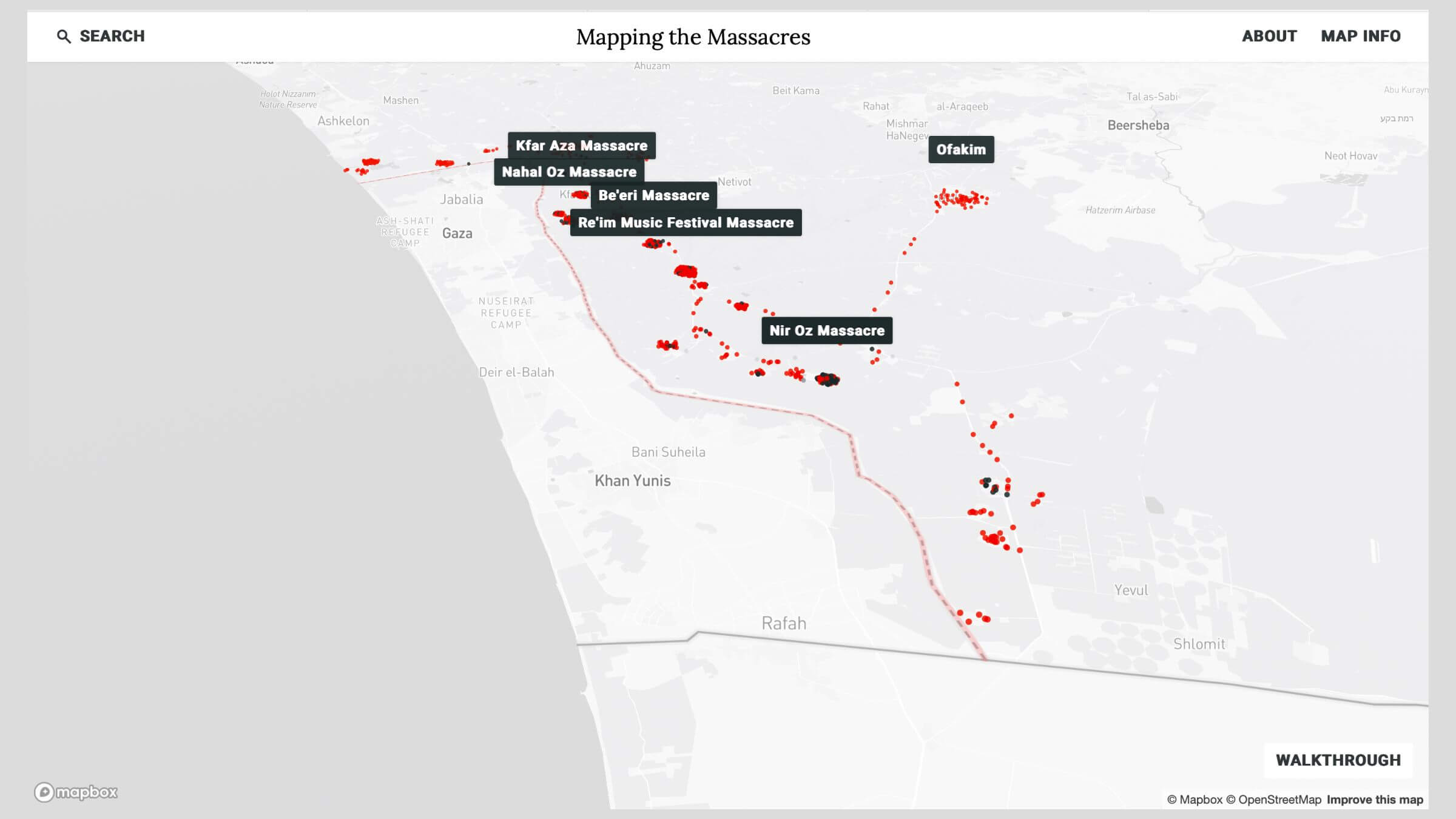New website documents Oct. 7 attacks by Hamas with chilling interactive map
Every murder and kidnapping is pinpointed with a red or black dot on oct7map.com

Graphic by Angelie Zaslavsky
A new website called the October 7th Geo-visualization Project uses a digital map of Israel to pinpoint the location of every murder and kidnapping that took place during the Hamas attacks.
The site shows the map splattered with clusters of red and black dots — red for every individual murder and black for every kidnapping. A dozen localities are named on the map as sites where Hamas carried out massacres or engaged in battle with Israeli soldiers, police and armed civilians.
Some 1,400 people, most of them civilians, were murdered in the surprise attacks by Hamas on Oct. 7, and 229 people were kidnapped, according to Israeli authorities. The assaults have led to a retaliatory war waged by Israel on Gaza.
Clicking on a dot brings up a victim’s name, and in some cases, a photo and description of them and what happened to them, along with links to news stories or profiles. In other cases, the victims are unidentified. The site includes a disclaimer that some of its data “may contain inaccuracies or omissions,” with viewers invited to send in additional information or corrections.
“This interactive map serves as a reflection and an educational tool, promoting awareness of the gravity of the horrors,” according to the site. “Our initiative is a continuous journey towards sharing the story and remembering our national pain.”
An English-language news report from TV7 Israel News identified the creators of the site as “a group of Israeli entrepreneurs” but gave no further details. Among those promoting oct7map.com was the official account for Israel on X (formerly Twitter). An official at the Israeli consulate in New York acknowledged an emailed query from the Forward asking who was behind the site, but did not immediately provide an answer.
A “walkthrough” button on the site links to graphic descriptions of the attacks on each locality. The Be’eri kibbutz description, for example, cites an account of a pile of children’s bodies tied together and burned to death.
Places labeled as “massacre” sites include Kfar Aza, Nahal Oz, Netiv HaAsara, Be’eri, Nirim, Nir Oz, Nir Yitzhak and the Re’im Music Festival. Additional locations for Re’im and Nahal Oz are also identified as military bases attacked by Hamas.
A click on each place name pulls up a description of the attack. Ofakim, a city of 29,000 people, is described as the site of an attack in which Hamas militants were “thwarted by local armed resistance.” Sderot, with a population of 28,000, is described as the scene of a pitched battle in which Hamas gunmen initially seized a local police station, killing 30 people, but were eventually overwhelmed by the Israeli military.
The site carefully memorializes, alongside Israelis, individuals who were nationals of other countries. For example, Singh Dhami Lokendra, 24, was among 10 agriculture students from Nepal who were murdered in the attacks on Kibbutz Alumim, where they were participating in a 11-month “earn and learn” program. “Lokendra’s wife had spoken to him on Friday and he was in high spirits,” asking about his 5- and 2-year-old children, the website says. His entire village is “now in deep mourning.”















